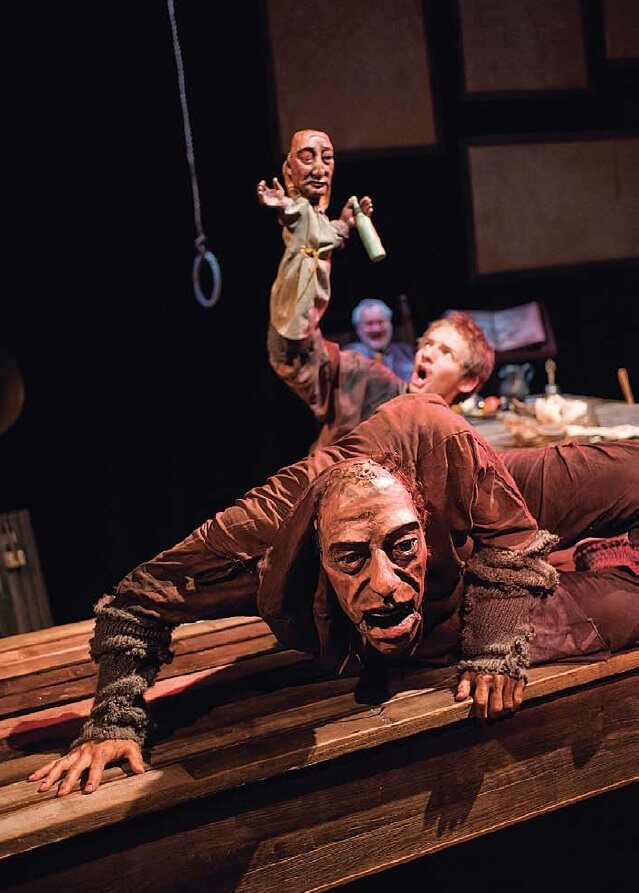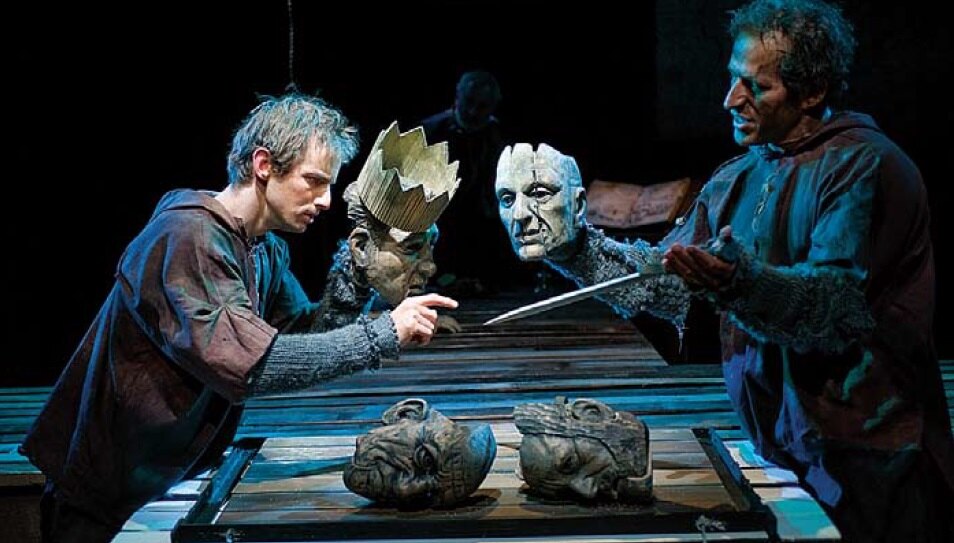Jessica Thebus, CO-DIRECTION AND ADAPTATION: Frank Maugeri and I focused our work on Prospero’s journey within the play, from rage to forgiveness. The concept involves Prospero building the puppets that he wants to see, and having Ariel and Caliban perform the show again and again. It’s through his relationship with them that he finds forgiveness. It makes sense that Prospero wants to see the story of the people he is angry with, including his brother Antonio, who has betrayed him; he wants to see the story of his daughter Miranda (who in this adaptation passed away on the journey) alive and grown up and getting married; and he wants to see the clown, for comic relief. We knew that each plot strand would have a different style of puppetry, and we wanted to make it look like the table and puppets were carved from the ship that Prospero arrived in. That’s how his magic is manifested—through this thing that he created from the ship. He’s the king at the head of the dinner table.
Frank Maugeri, CO-DIRECTION AND DESIGN: I wanted to create a world that accentuated the tyranny of Prospero and the imprisonment of Ariel and Caliban, through the lens of something mundane and universal. The dinner table is a place where we all sit and where celebration and conflict occurs. With its box form, I could examine the classical/Baroque toy theatre tricks that could come up through the planks. I wanted Jesse Mooney-Bullock, who handcrafted the puppets, and Neil Verplank, who built that machine of a set, to work from wood—everything was hand-carved, so people could think of Prospero as the craftsman of the world we’re experiencing. And the puppets gradually become more complicated: In the grouping that we call “four on the shore” (photo above), the heads of Alonso, Gonzalo, Sebastian and Antonio are designed to just chatter. The performers control two puppets, so they can leap from embodying one character to another. For the Punch and Judy–style Stephano and Trinculo (photo below), Jesse designed masks that go from happy to sad, so they were flexible with emotions. As for Caliban (also below), I wanted to free his hands up, so he could live on his hands and feet like a dog. When his mouth moved, the mouth of the puppet moved. Tempest was designed around a series of disorientations that kept the audience in a state of surprise, and in a world of symbolism, rather than literal text.

The Feast: an intimate Tempest, adapted by Jessica Thebus from Shakespeare, ran Jan. 18–March 11 at Chicago Shakespeare Theater, in association with Redmoon Theater. The production was co-directed by Thebus and Frank Maugeri, and developed for CST by creative producer Rick Boynton. It featured design by Maugeri, art direction/2-D and silhouette puppet design by Andrea Everman, 3-D puppet design by Jesse Mooney-Bullock, scenic engineering by Neil Verplank, lighting design by Andrew H. Myers, projection design by Mike Tutaj, music/sound design by Jefferey Allen Thomas, and costume designs by Sue Haas and Anna Glowacki.


